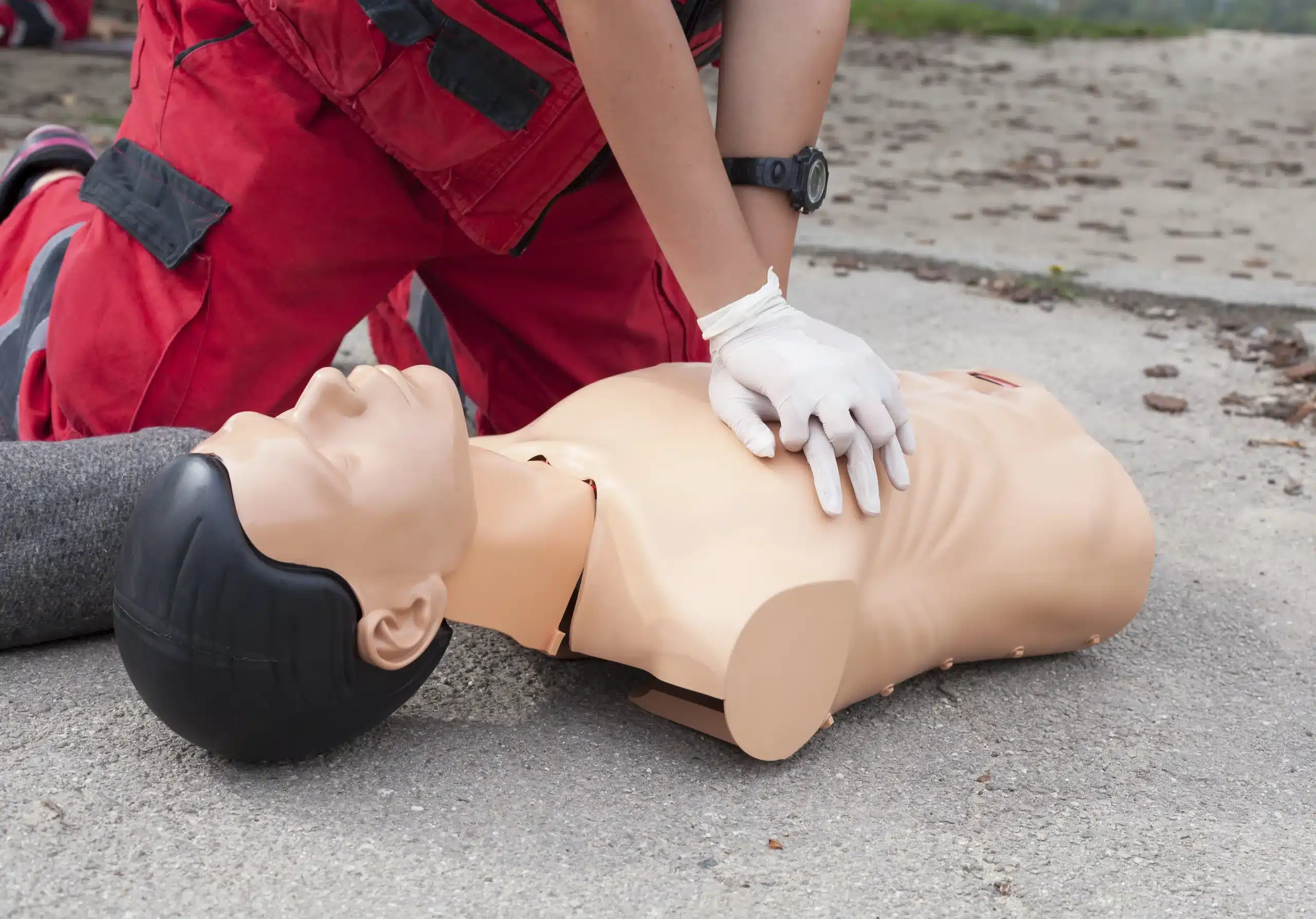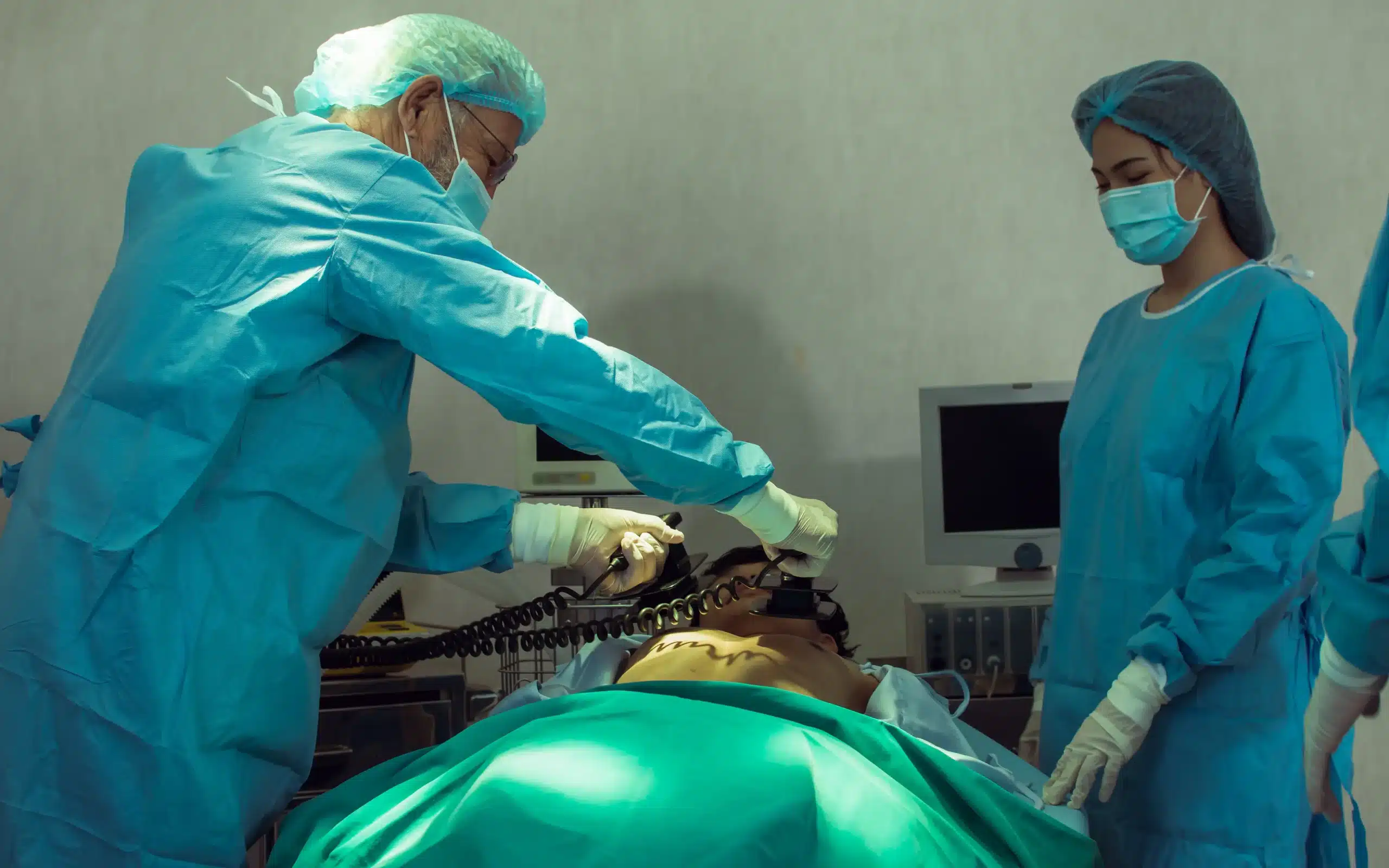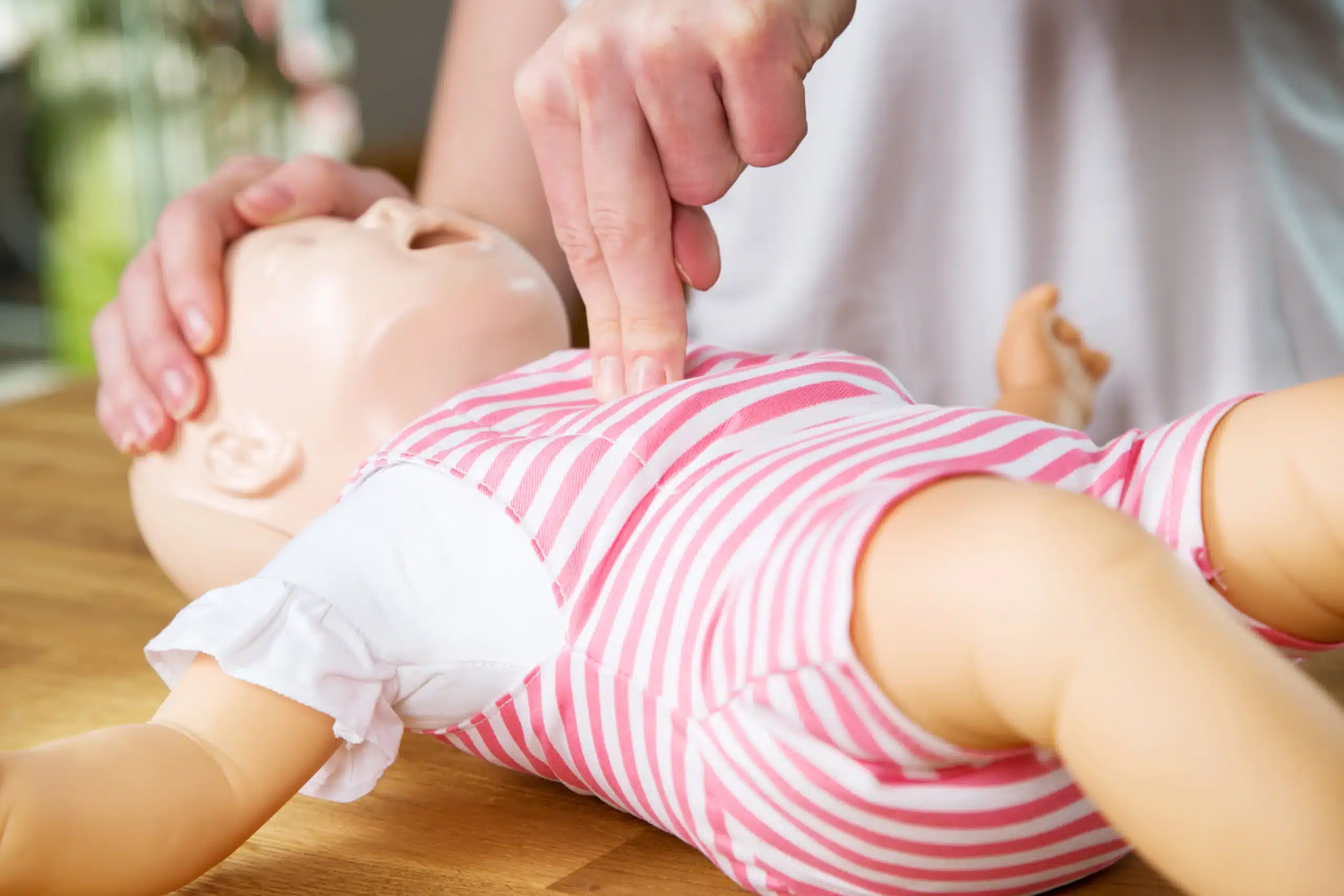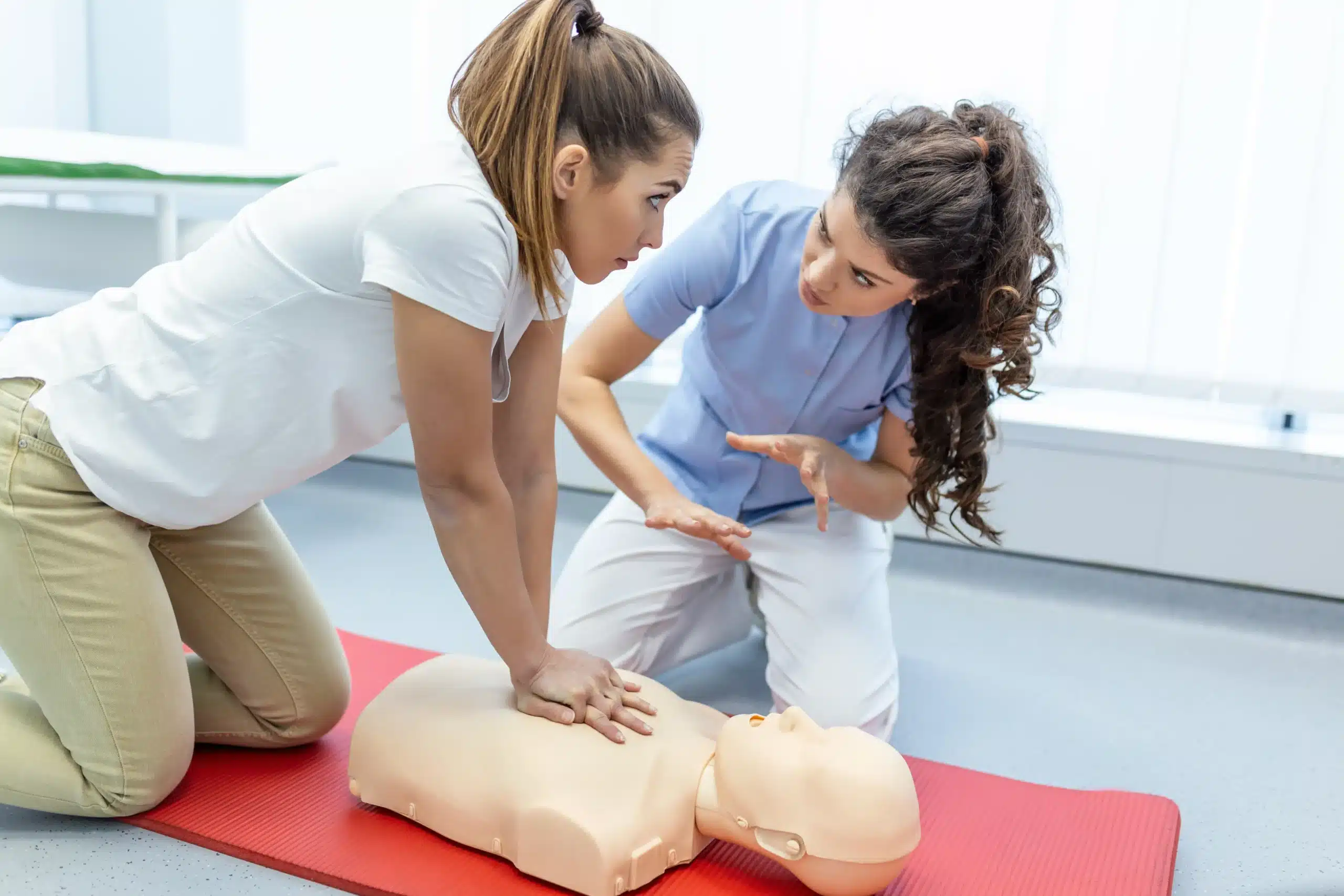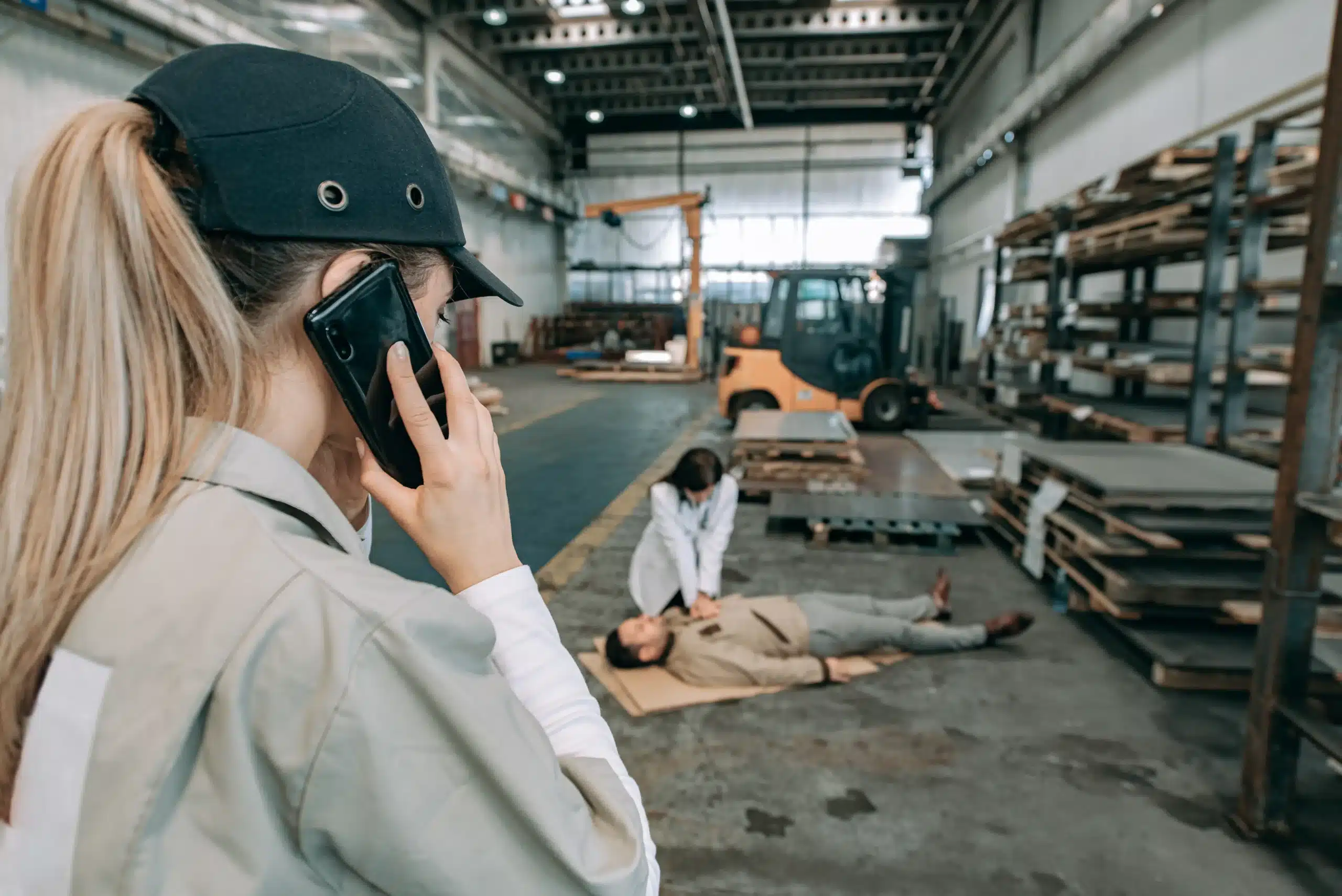Working in healthcare in San Jose, Santa Clara, or Sunnyvale? You know how crucial it is to be prepared for anything. From cardiac arrests to obstructed airways, emergencies can happen anytime, and having rock-solid Basic Life Support (BLS) skills can make all the difference. This guide breaks down everything you need to know about BLS for healthcare providers in San Jose, from understanding the key differences between BLS and CPR to finding the perfect course and staying up-to-date on the latest guidelines. Whether you’re looking for your initial certification or need to recertify, we’ll cover the essential skills, course formats, costs, and top providers in the area, so you can confidently provide the best possible care.
Key Takeaways
- BLS Certification goes beyond basic CPR: It provides healthcare professionals with advanced life-saving skills, including team-based resuscitation and specialized equipment use. Choose a course format (in-person, blended, or online) that suits your needs and schedule.
- Finding a suitable BLS course requires thoughtful consideration: Prioritize factors like location, schedule, and the training center’s reputation and certifications (AHA). Explore options like Safety Training Seminars, known for comprehensive training and competitive pricing.
- Maintaining your BLS skills is crucial for effective patient care: Regularly refresh core concepts and stay updated on the latest guidelines through recertification and continuing education. This ensures you’re always prepared to respond confidently in emergencies.
What is BLS Certification?
BLS certification equips healthcare providers and first responders with the skills to respond to life-threatening emergencies. It’s a crucial credential for anyone working in a healthcare setting. This section clarifies what BLS certification entails and why it’s so important, especially for those serving San Jose, Santa Clara, and Sunnyvale.
What is BLS and why is it important?
Basic Life Support (BLS) refers to the immediate care given to someone experiencing cardiac arrest, respiratory distress, or an obstructed airway. BLS certification focuses on practical skills, including CPR, using chest compressions and rescue breaths. For healthcare professionals, BLS certification demonstrates a commitment to patient safety and high-quality care. It provides the knowledge and confidence to act quickly and effectively in critical situations, potentially saving lives. These skills are regularly practiced through hands-on training, ensuring proficiency in these life-saving procedures. You can find BLS courses in San Jose easily through various providers.
BLS vs. CPR: Key Differences
While both BLS and CPR involve responding to emergencies, there are key differences. CPR training teaches anyone, regardless of their profession, basic life-saving techniques like chest compressions and rescue breaths. BLS certification, however, is a more advanced credential specifically designed for healthcare providers and first responders. A BLS certification course covers everything in CPR training, but also includes additional techniques for managing cardiac arrest, using specialized equipment, and working as part of a team. Think of CPR as a foundational skill set, while BLS builds upon that foundation with more comprehensive training tailored to the demands of a healthcare setting. For more information, you can explore resources like the American Heart Association BLS page.
Top BLS Certification Providers in San Jose
Finding the right BLS certification course can feel overwhelming, but several respected providers in San Jose make the process easier. Here are a few options to explore:
Safety Training Seminars
Safety Training Seminars, an American Heart Association Training Center, offers a range of AHA-certified courses, including BLS, ACLS, and PALS. This makes them a convenient option for healthcare providers seeking comprehensive training. They are committed to excellent customer service and offer a low price guarantee. You can find their upcoming BLS courses in San Jose on their website. They also offer other relevant courses like the EMSA Health and Safety course, which is particularly useful for California childcare providers.
American Red Cross
The American Red Cross is a well-known provider of health and safety training. Their BLS course for healthcare providers covers essential life-saving skills for adults, children, and infants. The Red Cross has a long-standing reputation and offers courses throughout the region.
CPR Training Center
CPR Training Center offers a streamlined BLS Provider course with same-day American Heart Association certification. This is especially helpful for those who need certification quickly for job requirements or upcoming renewals.
American Heart Association
While the AHA doesn’t directly teach courses, they set the standards for CPR and BLS training. You can find various AHA-certified training centers through their website or by searching online for AHA-certified BLS courses in San Jose. This allows you to compare different course options and schedules from various providers in your area.
BLS Course Formats
Choosing the right BLS course format depends on your learning style, schedule, and preferences. Here’s a breakdown of the main options available in San Jose: in-person, online, and blended learning.
In-Person Training
Traditional in-person BLS training offers a hands-on learning experience. You’ll work directly with certified instructors who guide you through the material, answer your questions, and provide real-time feedback. In-person classes are ideal for those who thrive in a structured classroom setting and prefer face-to-face instruction. The American Red Cross in San Jose offers in-person BLS certification and recertification courses, some as short as 4.5 hours. This format allows for immediate clarification and ample opportunity to practice skills with classmates.
Online Courses
Online BLS courses offer flexibility and convenience. You can learn at your own pace, revisiting material as needed. These courses often incorporate interactive elements like videos and simulations. This self-directed approach can be particularly helpful for busy schedules or independent learners. Online BLS courses facilitate self-paced learning and review, ensuring a thorough understanding of BLS principles. However, keep in mind that online courses typically require a separate in-person skills session for certification.
Blended Learning
Blended learning combines online flexibility with hands-on practice. You’ll complete the cognitive portion online at your own pace, then attend a shorter in-person session to demonstrate your skills and receive your certification. The Red Cross offers blended learning BLS courses in San Jose, requiring online coursework completion before the instructor-led portion. This approach is a great option for those who want online convenience but also value the personalized feedback of an in-person skills session.
What to Expect in a BLS Course
Getting ready to take a BLS course? Here’s a preview of what you’ll learn and do. A BLS course covers the skills healthcare providers need in medical emergencies. You’ll learn how to respond to different situations, from cardiac arrest to choking.
Course Content and Skills
BLS courses cover core life-saving skills. Expect to learn adult, child, and infant CPR, how to use an AED, and techniques for relieving airway obstructions. You’ll also cover essential protocols for team-based resuscitation. These BLS courses build a strong foundation for responding to emergencies effectively. Understanding the “why” behind the techniques is just as important as the “how,” so expect some discussion of the principles behind BLS interventions. This knowledge helps you adapt your skills to different situations.
Hands-on Practice and Simulations
BLS isn’t just about memorizing facts—it’s about putting skills into action. A significant portion of your BLS course will involve hands-on practice. You’ll work with training manikins to practice CPR, AED use, and bag-mask ventilation techniques. Many courses also incorporate realistic simulations. These simulations help you apply your knowledge in scenarios that mimic real-world emergencies. This hands-on training builds confidence and competence in critical procedures. It also helps you develop muscle memory and quick reaction times.
Assessment and Certification
At the end of your BLS course, you’ll complete a skills test and a written exam. These assessments demonstrate your understanding of the material and your ability to perform the required skills. Upon successful completion, you’ll receive your American Heart Association BLS Certification. This certification confirms you’re equipped to provide high-quality care in emergency situations. It is typically valid for two years. After that, you’ll need to recertify to stay current.
BLS Course Prerequisites and Costs
Getting BLS certified is straightforward, but it’s helpful to understand the process and gather your materials beforehand. This section covers everything you need to know about prerequisites, costs, and what to expect.
Recommended Background
While there aren’t strict prerequisites for taking a BLS course, a basic understanding of medical terminology can be helpful. BLS certification is designed for healthcare providers, including doctors, nurses, paramedics, EMTs, and other professionals working in healthcare settings. It equips you with the skills to respond to life-threatening emergencies like cardiac arrest, respiratory distress, and choking. You can learn more about the importance of BLS certification for healthcare providers in Santa Clara.
Required Materials
You’ll need a current BLS Provider Manual for the course. You can typically purchase this from your chosen training center, like Safety Training Seminars, often as an add-on during registration. Having the manual beforehand allows you to familiarize yourself with the content before class.
Course Prices and Duration
BLS Provider courses in San Jose generally cost around $70 and take approximately 3.5 hours to complete. Renewal courses often follow a similar structure and price point. For the most up-to-date pricing and available BLS courses in San Jose (Willow Glen area), check the Safety Training Seminars calendar.
Discounts and Offers
Many training centers offer discounts for group registrations. For example, some providers offer a 5% discount for groups of 2–5 people. Check with your chosen provider for any available discounts. Safety Training Seminars also has a low price guarantee, so you can be confident you’re getting a competitive rate. For more information about BLS courses and potential discounts, visit the CPR Training Center website.
Maintain Your BLS Certification
As a healthcare provider, your BLS certification is more than just a credential—it’s a testament to your commitment to patient safety and high-quality care. Maintaining your certification demonstrates your dedication to staying up-to-date with the latest life-saving techniques. Here’s how to keep your skills sharp and your certification current.
Recertification Requirements
BLS certification, like most medical certifications, requires periodic renewal. Typically, BLS certification is valid for two years. To maintain your credentials, you’ll need to complete a recertification course before your current certification expires. In San Jose, these renewal courses usually cost around $70 for a 3.5-hour class. Check with your employer or a preferred training center, like Safety Training Seminars, to confirm current pricing and available schedules. Planning ahead and registering in advance ensures you secure a spot and avoid any lapse in your certification.
Skill Retention Strategies
Hands-on practice is key to retaining the skills you learned in your BLS course. Regularly reviewing core concepts, such as chest compressions and rescue breaths, helps maintain muscle memory and reinforces best practices. Consider incorporating practice scenarios into your workplace training or personal study time. Even simple refreshers with colleagues can significantly improve your response time and effectiveness in real-world emergencies. This practical approach to skill development ensures you’re always prepared to provide effective care.
Continuing Education
Beyond recertification, ongoing learning is crucial for healthcare professionals. The medical field is constantly evolving, and staying informed about the latest advancements in emergency care is essential. Look for opportunities to expand your knowledge through continuing education courses, workshops, and online resources. Whether you prefer traditional classroom instruction or the flexibility of online learning, continuing your education demonstrates a commitment to providing the best possible patient care. Staying current with guidelines, such as those from the American Heart Association, ensures you’re equipped to handle any emergency situation confidently and effectively.
Overcome BLS Certification Challenges
Getting your BLS certification or keeping it current can sometimes feel like a hurdle, but with the right approach, it doesn’t have to be. Let’s break down some common challenges and how to address them.
Manage Time Constraints
We get it—juggling work, family, and other commitments makes finding time for a 3.5-hour BLS course tricky. Many providers, including Safety Training Seminars, understand this and offer courses throughout the week, including evenings and weekends. BLS renewal courses in San Jose are generally quick, efficient, and affordable, costing around $70. Check the course schedule to find a time that works for you. Look for providers who offer shorter, more focused renewal courses if you’re already BLS certified.
Access Training Resources
Finding the right training resources is key to a smooth BLS certification process. For healthcare providers in San Jose, Santa Clara, and Sunnyvale, there are several excellent options. Safety Training Seminars offers comprehensive BLS training in San Jose. Explore online resources and blended learning options that combine online modules with in-person skills practice. This blended approach allows you to learn at your own pace and still get the hands-on training you need.
Stay Updated on Guidelines
Staying current with the latest BLS guidelines is crucial for providing effective care. Guidelines and best practices do evolve, so regular recertification is essential. Subscribe to newsletters from reputable organizations like the American Heart Association to stay informed about updates. Many training providers also incorporate the most recent guidelines into their courses, ensuring you’re always equipped with the most current knowledge and techniques. Maintaining your BLS skills is fundamental to providing high-quality patient care.
Choose the Right BLS Course
Finding the right BLS course can feel overwhelming with so many options available. But by focusing on a few key factors, you can easily narrow down your choices and select the best fit for your needs.
Factors to Consider
When choosing a BLS course, think about what matters most to you. A convenient location is key, especially in a busy area like San Jose. Safety Training Seminars offers courses in easily accessible locations like Willow Glen. Consider your schedule, too. Do you need a weekday evening class, or would a weekend course work better? Look for providers that offer flexible scheduling to accommodate your needs. Hands-on training with certified instructors is crucial for mastering the skills you’ll need in a real-life emergency. Make sure the course you choose emphasizes practical application and provides ample opportunity to practice. For specific requirements in California childcare settings, check out these health and safety resources.
Compare Courses and Providers
Once you’ve identified a few potential providers, take the time to compare their courses. Check if they offer American Heart Association (AHA) or Red Cross certification. The AHA BLS course is widely recognized and respected in healthcare. Read reviews from past students to get a sense of their experiences. Don’t hesitate to contact the providers directly with any questions. A reputable provider will be happy to discuss their courses and address any concerns. You can also compare pricing, but remember that the lowest price isn’t always the best value. Safety Training Seminars offers a low price guarantee, ensuring competitive pricing without compromising quality. Focus on finding a balance between affordability and a comprehensive learning experience.
Registration and Next Steps
Once you’ve found the right BLS course, register as soon as possible, especially if you have a deadline. Many providers use online registration systems that allow you to quickly secure your spot. Check the provider’s website for the most up-to-date schedule and registration information. For healthcare providers in San Jose, Santa Clara, and Sunnyvale, earning your BLS certification is a significant step in providing excellent patient care. Taking the time to choose the right course will set you up for success and give you the confidence to respond effectively in any emergency. Learn more about the RQI program offered by the American Heart Association for maintaining your skills.
Related Articles
- BLS Certification in Santa Clara: A Guide for Healthcare Providers – San Jose CPR Classes
- BLS Courses in San Jose: Your Complete Guide – San Jose CPR Classes
- BLS Training in San Jose: Your Ultimate Guide – San Jose CPR Classes
- BLS Certification San Jose | AHA BLS Classes & Training
- CPR Certification San Jose: Your Complete Guide – San Jose CPR Classes
Frequently Asked Questions
How often do I need to renew my BLS certification? BLS certification is typically valid for two years. You’ll need to take a recertification course before your current certification expires to stay current.
What’s the difference between BLS and CPR certification? CPR training teaches basic life-saving skills to anyone, while BLS certification is more advanced and tailored to healthcare providers and first responders. BLS builds upon CPR skills with additional techniques and knowledge relevant to medical professionals.
Are online BLS courses available, and do they meet the requirements for certification? Yes, online BLS courses offer flexibility for learning the material at your own pace. However, they usually require a separate in-person skills session to complete the certification process.
What can I expect during a BLS course? Expect a combination of learning key concepts and hands-on practice. You’ll learn adult, child, and infant CPR, AED use, and how to relieve airway obstructions. You’ll also practice these skills with manikins and participate in realistic simulations. A written exam and skills test are typically part of the certification process.
How much does a BLS course cost, and where can I find one in San Jose? BLS courses in San Jose typically cost around $70 and last about 3.5 hours. Several providers offer courses, including Safety Training Seminars, the American Red Cross, and CPR Training Center. Check their websites for schedules and pricing. You can often find discounts for group registrations.
